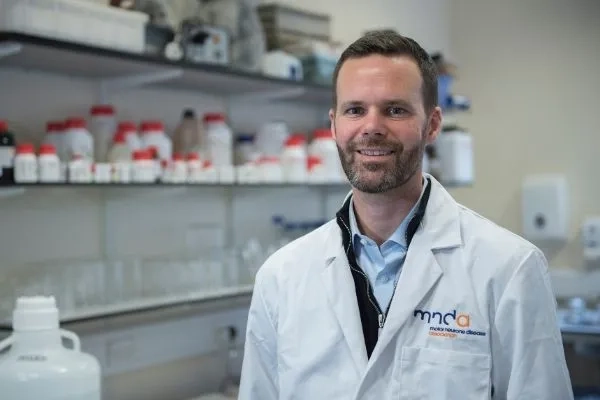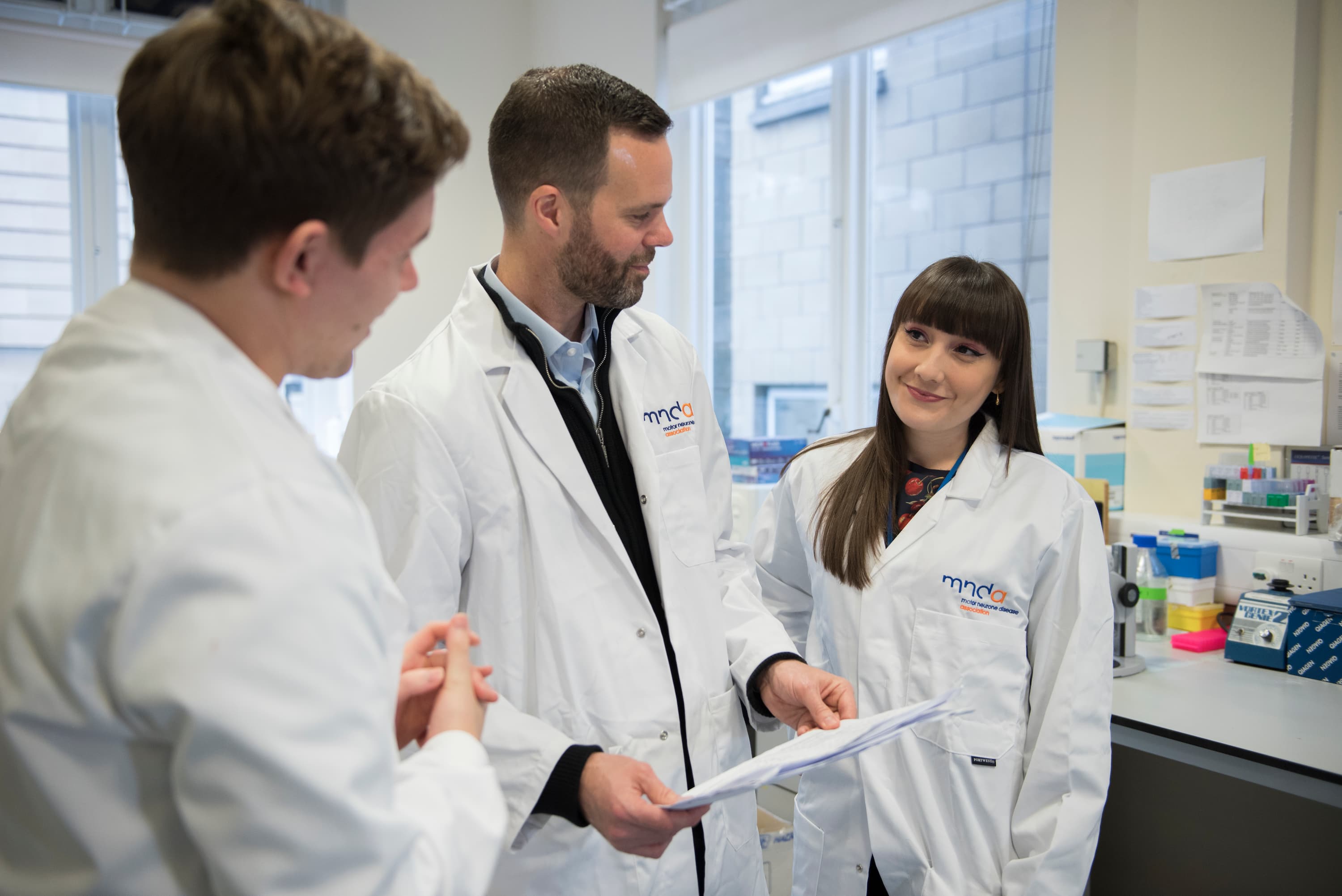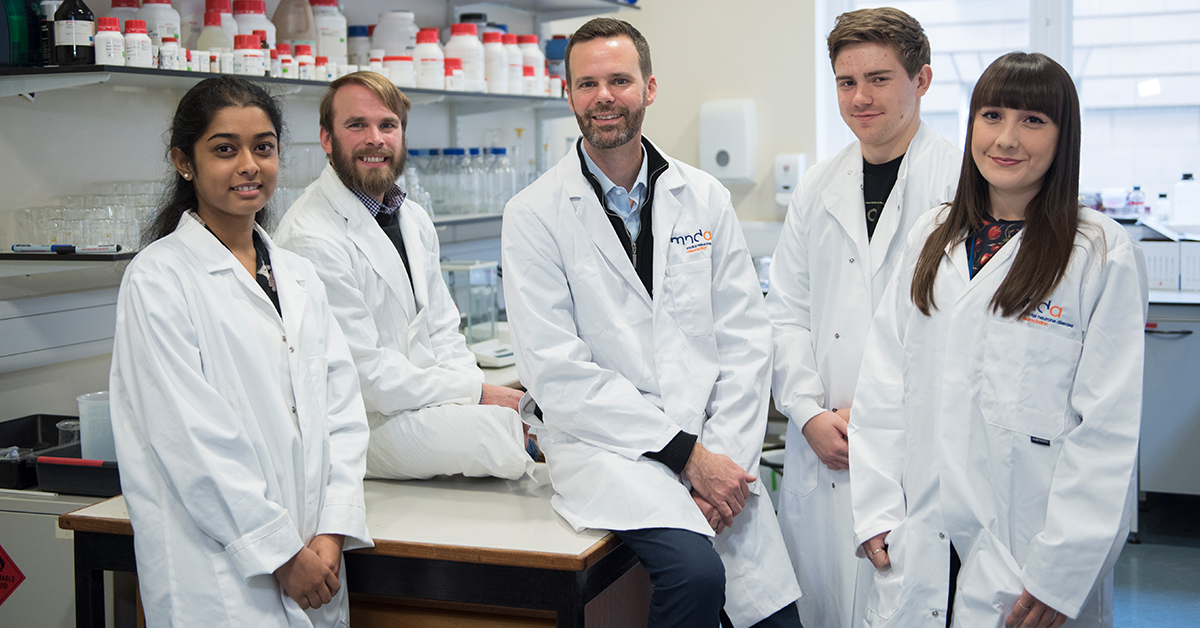Professor Gareth Miles didn’t allow the pandemic to slow him and his team down. They’re seeing all the work they did in isolation start to come to fruition. He’s written a special update just for our Cure Finders on his progress in recent months and how – as things slowly get back to normal – he’s determined to connect with the best and brightest from around the world.
Bringing great minds back together
After two years, we’re fully back in the lab and back in the classroom too. We’ve got international students from all over the world studying with us once again. Having everyone back in the same room has been excellent and it’s laying the foundations of relationships between researchers that will span continents and last their whole careers.
Teaching online had its benefits during the pandemic, it allowed us to keep working. But teaching young researchers face to face means they can become much more immersed in what we’re doing.
Our work in the global spotlight
We’ve recently had a paper published in the Acta Neuropathalogica medical journal, which is well-regarded the world over and read by researchers focusing on many different neuropathological conditions.
The paper covers our work looking at different types of synapses (sometimes called neural junctions). Synapses transmit electrical signals between cells and around the body.
What we’ve discovered is that if you look at the different types of synapses, there are certain types that are specifically vulnerable to degeneration in both the mouse model we use and in human tissue too.
Many synapses are simply two neurons talking to each other. But some also have a type of glial cell called an astrocyte. We call them tripartite synapses because of the three distinct elements. It’s these more complex synapses that seem to be more vulnerable in MND. What we’re trying to work out, is why?
Thankfully, Dr Matt Broadhead – postdoctoral researcher and my co-investigator on this MND Association-funded project – is a bit of a whizz at looking at things at a really high resolution. He’s using a process called super resolution microscopy where we can go in to look at synapses in far more detail than usual. We can see the complex structures of proteins, which are really important for making the synapses work. In synapses affected by MND, we can see there are fewer of those complex structures.
We plan to follow through on this and see what relevance it has for MND and potential treatment of it.
Glial cells are clearly negative players in MND and, as has also been noted in other disease like Alzheimer’s, synaptic loss also contributes to MND. What’s really interesting is that we’re now pulling those two threads together. If we can establish where these conditions all meet, it’ll be a key spot to investigate further – and even eventually target. That’s really exciting.
Getting our work featured in a journal like Acta Neuropathalogica is a really positive step and it speaks to the quality of the work we’re doing here, which has been funded by the MND Association.
Forging new friendships
In relation to our work around synapses, earlier in the year we started a promising new collaboration with a scientist in Germany called Francesco Roselli. He’s doing work using viral-genetic approaches to manipulate the activity of synapses. They can selectively change the activity of the astrocytes, the neurons, or both.
He’s recently sent us some tissue to work with using Matt’s techniques. We want to know what happens to the synapses when we stimulate the astrocytes in a whole animal model of MND. Are they lost or strengthened? There’s a nice path there towards manipulating the system and then seeing what the effects are. We’re currently hoping the MND Association will be able to fund further work with Francesco.
On a wider scale, now that global networking events are moving away from the online-only model they’ve had to follow for the last couple of years, we’re about to start meeting with fellow MND researchers face to face again.
A few of us will be travelling to the International Motor Neuron Society meeting in Canada in June. It’s a mixture of basic motor neurone science and a strong MND focus. There should be around 200-300 scientists there, so it’s a great opportunity to get feedback on our work and discover other projects that have a crossover with what we’re doing.
Virtual conferences have been great, but a lot of what is important about these meetings is the social networking that leads to the next collaboration.
Thanks to the Cure Finders
The MND Association’s funding has been vital to everything I’ve been able to update you on in this post. In the labs we’re well aware of the really important role that the Cure Finders are playing in making sure we have that funding. So I want to say thank you. Believe me, your support is helping us make incredible progress despite all the challenges of the last two and a half years.
Whether we’re pushing the envelope in the lab, or getting out there and collaborating with the best MND researchers the rest of the world has to offer – you’re making that happen. Thank you, from me and my entire team.


